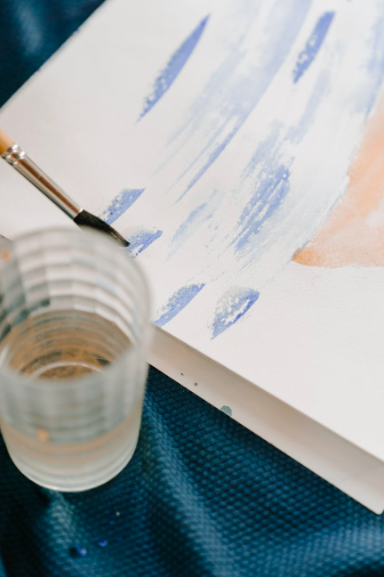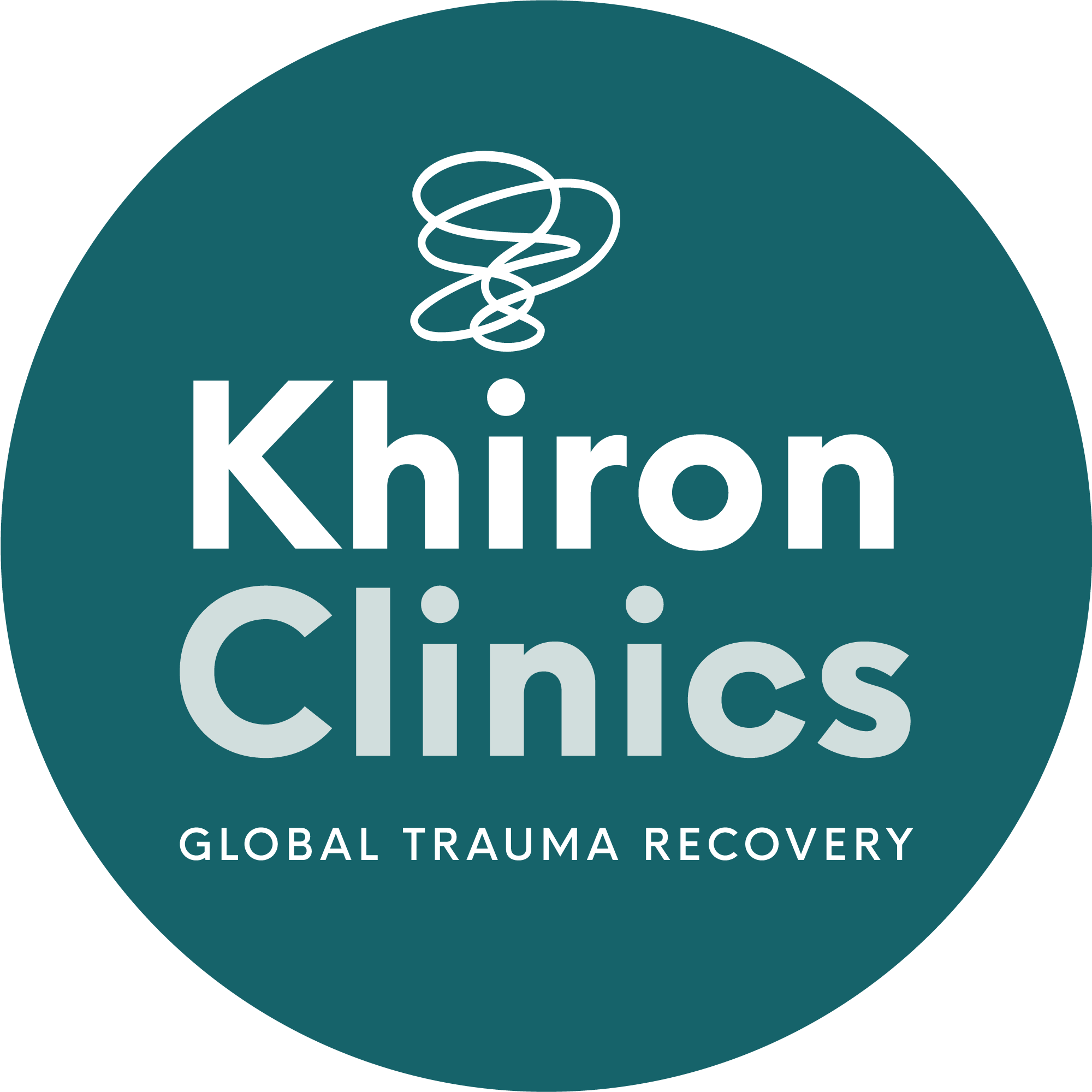Art, music, movement, play, and drama-based interventions are growing in popularity as effective therapies in promoting healing from psychological trauma.
Many trauma survivors find difficulty in verbalising their experiences, and for those who are able to do so, they are regularly called upon to recount or recall their experiences in traditional, talk-based therapy settings. This regular re-telling can be mentally and physically exhausting, and poses a risk of retraumatisation, in which a client experiences a ‘reliving’ of their trauma.
Words are not always necessary in art-based therapies. Both client and therapist can step out of the roles of traditional, talk-based therapies and enter a space that creates more comfort and freedom of expression for the client. At Khiron we believe that there are many ways in which trauma can be effectively processed; this is why we employ a multitude of modalities to enable our clients to live their best possible lives.
Who is Art Therapy for?
Art therapy can be delivered to a diverse population of all ages. It is used effectively to support treatment of a wide range of issues, including substance addiction and other behavioural disorders, anxiety, depression, and other issues that are strongly associated with psychological trauma and PTSD. A widely accessible treatment, art therapy does not require any prior artistic talent or skill to be therapeutically effective. The modality is not as much about the quality of the artwork itself as it is about the connection between the artwork and the clients thought, feelings, and behaviour.
Art therapy has its roots in the idea that healing and mental well-being can be fostered through creative expression.[1] While the creation of art is in itself therapeutic, or at least cathartic, creating art outside of a therapy setting and without the support and guidance of a professionally trained art therapist is not art therapy.
Healing from PTSD with Art Therapy
While some people go through traumatic experiences and remain able to live their lives relatively unaffected, others go on to develop Post Traumatic Stress Disorder (PTSD), whereby the memory of the traumatic event becomes stored in the mind and body, even though the original event has passed. Those suffering from PTSD tend to feel uncomfortable and unsafe inside their bodies, where ‘the past is alive in the form of gnawing discomfort.’[2]
The unprocessed trauma living in the body gives rise to a range of difficult and challenging symptoms, including, but not limited to:
- Hyper or hypo-arousal
- Anxiety
- Depression
- Panic attacks
- Re-experiencing the trauma (flashback, nightmares)
- Numbness
- Psychological dissociation
These symptoms significantly impair the suffering individual’s quality of life, impacting their sense of self and their ability to form and maintain healthy relationships and interpersonal connections.
Art therapy can offer many benefits for those suffering from PTSD and its associated symptoms. It is of significant benefit for children who have experienced trauma, like difficult family transitions or various forms of abuse, who may not have a wide enough vocabulary to express their inner thoughts and feelings through words.
Professional Art Therapist Gretchen Miller states: ‘Art expression is a powerful way to safely contain and create separation from the terrifying experience of trauma. [It] safely gives voice to and makes a survivor’s experience of emotions, thoughts, and memories visible when words are insufficient.’[3]
Trauma, the Body, and Art Therapy
As a result of trauma, many people experience a disconnect between and body, known as dissociation. This occurs initially as a means of ensuring survival and lessening the impact of the traumatic event on the individual’s psyche. However, in the long term, dissociation can give way to the development of psychiatric disorders such as Dissociative Identity Disorder (DID), or simply a lack of awareness of one’s physical sensations and which messages the body is trying to send to the mind.
Art therapy promotes a re-connection to the body by making use of tactile and visual stimulation. Exploration of sight and touch is known to tap into the amygdala; the area of the brain that governs our fear response. This makes art therapy a powerful tool in regaining and re-establishing the mind-body connection.
Benefits of Art Therapy
Art therapy incorporates different artistic mediums, depending on the specific type of artistic expression used (painting, drawing, sculpting, play, sound). Supported by an attuned therapist-client relationship, art therapy offers those suffering from PTSD symptoms an opportunity to call upon their innate strengths and resilience and safely explore their traumatic memories without the need to provide a detailed verbalisation of those memories. One of the greatest benefits of art therapy is exactly that; it offers an alternative means of expression for the client, and promotes safe yet fruitful exploration of one’s experiences and the experiences that preceded the traumatic event(s).
According to PTSD UK, art therapy has a powerful neurological effect on the client:
‘Art therapy has been shown to bring together a mind-body connectedness, bi-lateral stimulation, conscious and unconscious mental activity, communication between the limbic system and cerebral cortex functioning, and allow the brain to use mental and visual imagery.’[4]
The Power of Creative Expression
Ultimately, art therapy offers an opportunity for clients to work through their traumas with a trained therapist in a way that accesses the innate drive for creative expression that lies within each of us, the same expression that can bring to the surface repressed or unconscious ways of seeing and thinking that are impacting our lives in the present. Backed by effective coping strategies and self-management techniques as learned through psychoeducation, an important aspect of the therapeutic process, art therapy can help reduce the strong emotional charge attached to our traumatic memories, providing relief from difficult symptoms and moving us forward on the path to healing.
Get in touch
If you have a client, or know of someone who is struggling to heal from psychological trauma and could benefit from Art Therapy for Trauma, reach out to us at Khiron Clinics. We believe that we can improve therapeutic outcomes and avoid misdiagnosis by providing an effective residential program and out-patient therapies addressing underlying psychological trauma. Allow us to help you find the path to realistic, long lasting recovery. For information, call us today. UK: 020 3811 2575 (24 hours). USA: (866) 801 6184 (24 hours).
Sources
[1] Stuckey HL, Nobel J. The connection between art, healing, and public health: a review of current literature. Am J Public Health. 2010;100(2):254-63. doi:10.2105/AJPH.2008.156497
[2] The Body Keeps the Score: Brain, Mind, and Body in the Healing of Trauma. New York: Viking, 2014. Van der Kolk, Bessel A.
[3] Miller, Gretchen. (2016). The Value of Art Expression in Trauma-Informed Work.
[4] Ptsduk.org. n.d. How Art Therapy Has Helped Those With PTSD – PTSD UK. [online] Available at: <https://www.ptsduk.org/how-art-therapy-has-helped-those-with-ptsd/#:~:text=Art%20therapy%20has%20been%20found,complex%20feelings%20to%20be%20expressed.> [Accessed 5 September 2020].



